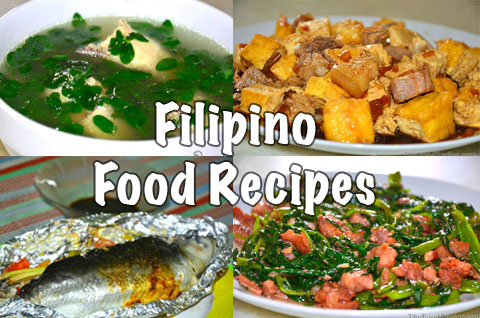Filipino cuisine is a reflection of the influences that have been inflicted all throughout the island. Surprisingly, as Asia’s reputation on spices, Filipino food recipes are mostly sweet, sour and salty dishes – only a few regions adore spice menus. However, provincial areas have their specific native dishes they are known for. The basic staple food in the Philippines is rice, of which they are known for as rice-eaters. Abundant with natural resources, Filipinos have wide sources on meat (pork, fish, beef and chicken), poultry products, fruits and vegetables, and herbs and spices.

Filipino food recipes make trademark on their dishes distinctively on every region. Regional recipes demonstrate their cultural heritage, which will distinctively identify them. They may have varieties of flavors and ways of cooking throughout the archipelago, but the basic taste and procedure are just the same. Most Filipino food recipes are sweet, sour and salty, although some are with a little kick of chili. In some regions, they are known for their exotic menus like delicacies from meats of goats, dogs, frogs, cobra snakes and even crocodiles. The idea on Filipino food recipes are basically more on sauces and with a festive presentation. Filipinos are known for its loads of festivities, thus, there are special recipes that are commonly served during these feasts – like the lechon (roasted pig). This is a very special and common Filipino food recipe to all get-togethers in the Philippines. Different regions have different ways in roasting the pig. The pig is cleaned, stuffed with aromatic herbs and spices, and all other special recipes to make a distinctive taste; then, the pig is thrust with a bamboo pole from head to tail and roasted over live coals until it is golden red.
Filipino food recipes involve mostly on frying, boiling, roasting and steaming. Filipino cooking is easily followed because of its resemblances on other cooking influences such as from Chinese and Western. Desserts are always a part of almost every Filipino meal, an influence inflicted by the Spanish colonizers. Kakanin, is the Filipino native desserts, which is basically coconut milk-based. Filipinos are not really into baking that much, hence they are into steaming and boiling for these delicacies. Filipino food recipes require great understanding on the culture of the Filipinos. This means that every recipe follows good old Filipino tradition and discovering secret recipes and procedures to make up a very tasty Filipino dish.
The effects of the combination of traditional Philippine cooking and foreign influences are generally tasty without being too spicy, simple but not bare, exciting but not strange and extremely good to eat without being too rich nor fattening. It may be said that in the meeting of east and west in Filipino food recipes are the best of both worlds that have been refined and accomplished
==> Click here to check out some recipes in The Food Recipe section